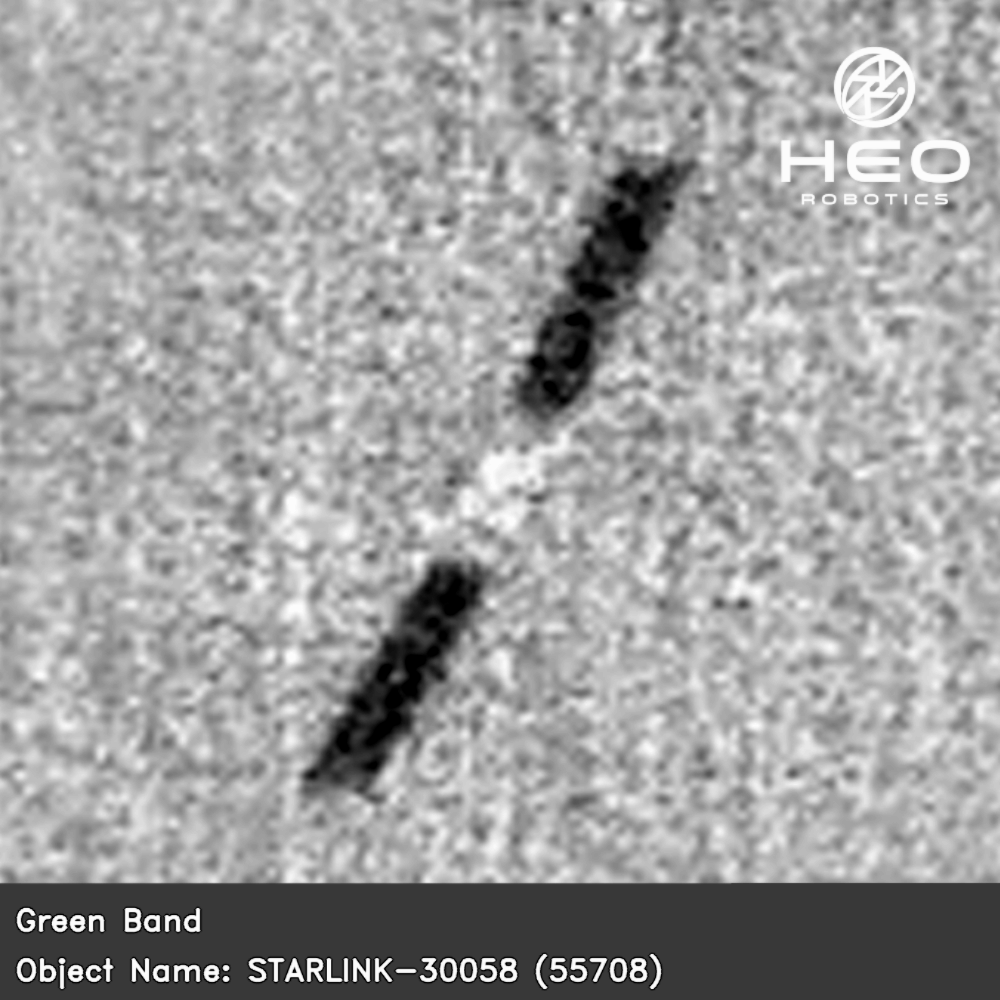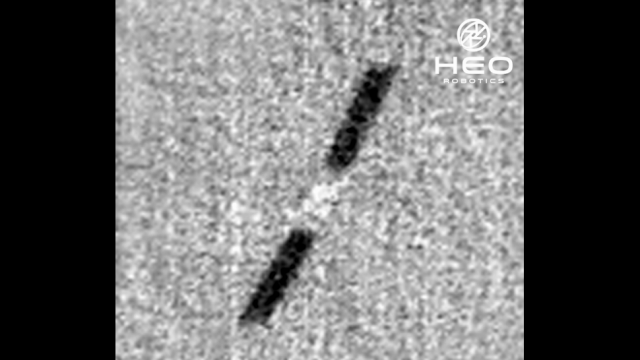Say cheese: a newly deployed Starlink V2 satellite unknowingly posed for an orbital snapshot captured by a satellite imaging company. The photo revealed the new look of the miniature satellites in action, which SpaceX is hoping will increase the broadband capacity of its internet constellation.
This week, Australia-based HEO Robotics released a fuzzy image of one of SpaceX’s next-generation satellites in low Earth orbit. “This was our first observation of the V2 Minis,” Dane Brumm, communications officer at HEO Robotics, told Gizmodo in an email. “Through our photo, we’re able to identify two solar panels, which we didn’t know existed before, which is a noticeable difference from other similar Starlink satellites.”

Indeed, one of the noticeable new tweaks on the Starlink V2 Minis are its two solar panels, one on each side. First-generation Starlinks have just one solar panel.
The image was taken at a distance of about 86 miles (139 kilometers) by a HEO Robotics’ satellite. “We are able to identify the object as a Starlink satellite through TLEs [two-line element sets], which is essentially available tracking information that indicates where space objects are in their orbit,” Brumm said. “We can then reference open source data to find out characteristics like how big it’s supposed to be, and what its intended shape should be to confirm the object in our image is the Starlink satellite.”
HEO Robotics provides satellite imagery of objects in orbit, as well as satellite inspection services for government and commercial operators. The company has imaged over a hundred objects after they reached their orbital destinations and later used its software to identify the objects. For the latest image, HEO Robotics captured a Starlink V2 Mini just one week after it was deployed in low Earth orbit.
SpaceX launched 21 miniaturized versions of its next generation Starlink satellites, nicknamed the V2 Minis, on February 27. The satellites were tucked on board a Falcon 9 rocket, which lifted off from Space Launch Complex 40 at Cape Canaveral in Florida.
The company introduced the V2 Minis to the world through Twitter a day before they were set to launch. The V2 Minis are equipped with more powerful antennas and high-speed frequencies, “which will allow Starlink to provide ~4x more capacity per satellite than earlier iterations,” SpaceX wrote on Twitter. V2 Minis also come with argon-fuelled Hall thrusters, a cheaper alternative to xenon propellant that’s more commonly used for satellite propulsion systems.
SpaceX is hoping the V2 Minis will temporarily fill the gap for the increasing demand on its Starlink network until the company can launch the full-sized version of its next-generation satellites. Unfortunately, the full-sized V2s can’t fit inside a Falcon 9 rocket. Instead, SpaceX is waiting on the launch of its Starship megarocket that’s designed to handle larger payloads.
Until that happens, SpaceX designed a smaller version of the V2s, which recently made their orbital debut and are enjoying their time in the spotlight before the big boys come out to play.
More: Everything We Noticed During SpaceX’s First Big Test of Starship Megarocket
